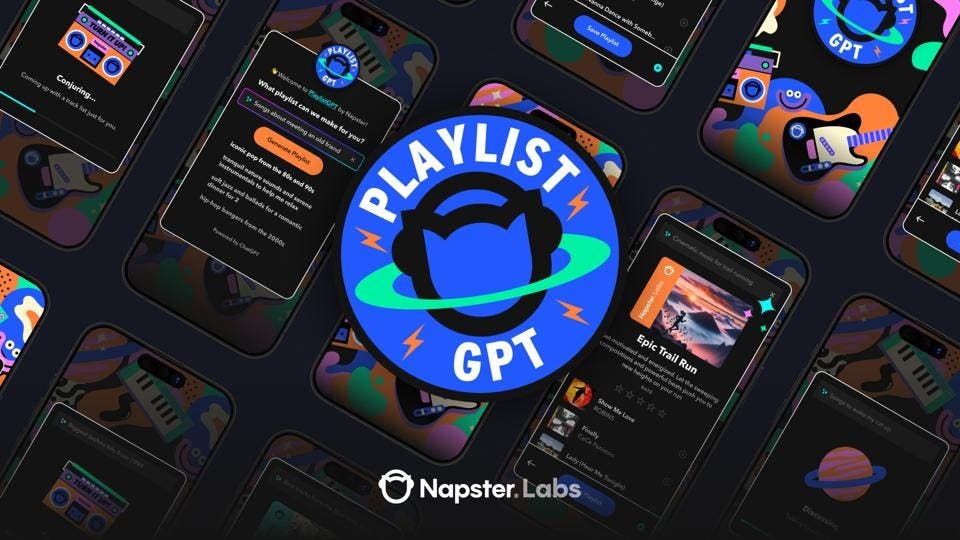Napster bring ChatGPT in to make your next playlist
Napster are launching a new playlist feature powered by AI, allowing listeners to tell ChatGPT-powered AI what to make.
Ever stuck for something to listen to? Just ask Artificial Intelligence to do it for you. At least, that’s what Napster are offering with their new PlaylistGPT technology.
Powered by ChatGPT, the new playlisting tool lets users input a text prompt which the AI will use to produce a playlist with. PlaylistGPT will produce a title, description, and custom artwork to go with a selection of songs it reckons suits your prompt best.
The tool is available to everyone, although only Napster subscribers will be able to listen to the results in full. Non-subscribers can still create their playlists but will only be able to enjoy 30-second clips of the songs. It will take a surprising range of prompts and work out what to do with them.
ChatGPT has been able to use prompts to create a playlist of songs for a while. Napster CEO Jon Vlassopulos wanted to make those playlists listenable. He said: “The end goal for people is obviously to try to listen to the playlist, so we thought, ‘Why don’t we finish it?’ We’re connecting it all together.”
Vlassopulos has been encouraging interesting tech developments for Napster, setting it apart from other traditional streaming services. Earlier in the month, they launched their first virtual hangout. These virtual hangouts offer a digital space hosted by artists that users can enter to meet other fans and take part in unique experiences, like listening parties and virtual live shows.
They plan to launch virtual hangouts with a number of artists this year. Vlassopulos says: “Every artist should have their own virtual space where they can drop singles, hang out, meet their fans, have digital goods, physical goods, talk about tours and express themselves in their own unique way.
“The whole notion is to have it to be plug and play. Right now it’s a little white-gloving, where we can do three to four a month, then we’ll scale to 10 and ultimately give the keys over to the managers and the labels and the artists themselves so they can do it.”
